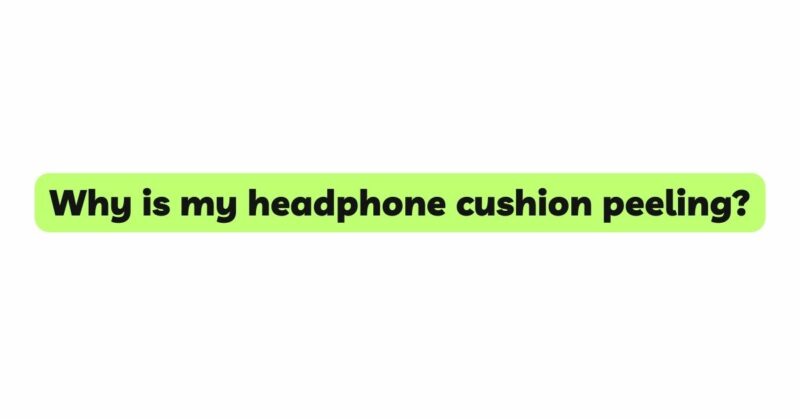Headphones have become an indispensable part of our daily lives, offering a private and immersive audio experience. However, over time, many headphone users encounter a common issue: the peeling of their headphone cushions. This frustrating problem not only affects the aesthetics of the headphones but also compromises comfort and sound quality. In this article, we will explore the reasons behind headphone cushion peeling, identify the factors that contribute to this issue, and offer potential solutions to prevent or address the problem.
- Material Composition and Quality:
The quality and composition of the materials used in headphone cushions play a significant role in their durability and resistance to peeling. Common materials include genuine leather, synthetic leather, faux leather, and other fabrics like velour or cloth.
- Genuine Leather: While genuine leather is durable and offers a luxurious feel, it requires proper care and maintenance to prevent drying and peeling. Exposure to moisture, oils, and sweat can cause the leather to deteriorate over time, leading to peeling and cracking.
- Synthetic Leather/Faux Leather: Synthetic leather or faux leather is a more affordable alternative to genuine leather. However, these materials may be more susceptible to peeling, especially when exposed to extreme temperatures or frequent use.
- Fabrics (Velour, Cloth): Fabrics like velour and cloth are breathable and comfortable, but they may not be as durable as leather materials, and the fibers can fray or wear out over time.
- Contact with Skin Oils and Sweat:
Headphone cushions come into direct contact with the user’s skin, which releases natural oils and sweat. The accumulation of these substances over time can seep into the material and cause it to degrade, leading to peeling and deterioration.
- Environmental Factors:
Environmental conditions can also impact headphone cushion peeling. Exposure to sunlight and extreme temperatures can cause the material to become brittle or dry out, making it more prone to cracking and peeling.
- Cleaning and Maintenance Practices:
Proper maintenance and cleaning of headphone cushions are essential to prevent peeling. Cleaning the cushions regularly with appropriate methods and materials can help remove oils, sweat, and dirt, preserving the material’s integrity. However, improper cleaning practices, such as using harsh chemicals or abrasive cleaning tools, can damage the surface and contribute to peeling.
- Age and Wear:
As headphones age and experience regular wear, the materials used in the cushions may naturally deteriorate, leading to peeling over time. Frequent folding and stretching of the headphones can also strain the cushions, accelerating the wear and tear.
- Impact of Ear Pad Replacement:
Sometimes, peeling headphone cushions are a result of replacement pads that do not match the original design or material quality. Using incompatible or lower-quality replacement pads can cause premature peeling and compromise the overall headphone experience.
Solutions to Prevent or Address Headphone Cushion Peeling:
- Choose High-Quality Headphones: Invest in headphones from reputable brands known for using high-quality materials in their construction. Ensure the headphone cushions are made from durable and long-lasting materials.
- Regular Cleaning and Maintenance: Clean the headphone cushions regularly using gentle cleaning agents and soft cloths. Avoid using harsh chemicals that can damage the material.
- Store Headphones Properly: Store headphones in a protective case or pouch when not in use, away from direct sunlight and extreme temperatures.
- Use Protective Covers: Consider using protective covers or sleeves for the headphone cushions, especially during intense use or outdoor activities, to shield them from sweat and oils.
- Follow Manufacturer Guidelines: Adhere to the manufacturer’s guidelines for care and maintenance, including the recommended cleaning methods and replacement schedules.
- Invest in Genuine Replacement Pads: When replacing worn-out headphone cushions, opt for genuine replacement pads from the manufacturer or authorized retailers to ensure compatibility and quality.
Conclusion:
Headphone cushion peeling can be a frustrating issue that impacts comfort, aesthetics, and overall audio performance. Understanding the factors contributing to this problem, such as material composition, contact with skin oils and sweat, environmental conditions, cleaning practices, age, and replacement choices, can help users prevent or address the issue proactively. By investing in high-quality headphones, following proper maintenance routines, and using compatible replacement pads, users can prolong the lifespan of their headphones’ cushions and continue to enjoy an optimal listening experience.

